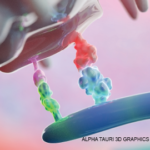Data on the risk of cancer recurrence are of greatest clinical importance because there likely will never be a clinical trial randomizing patients with prior malignancies to different treatment groups. Nevertheless, in daily practice, these patients need adequate treatment for their rheumatologic disease. The only option for answering such clinical questions is careful, long-term observation.
So Are We Safe Now?
Today, we have more evidence regarding the safety of TNF inhibitors and the risk of malignancy than we have ever had for any other immunosuppressive therapy. Although the data are reassuring, important unanswered questions remain. Our knowledge is still restricted to patients for whom rheumatologists have made careful decisions regarding the use of new treatments. Additionally, even if we are confident as to the overall risk of cancer, we do not know enough about site-specific tumor risks.
Patients with very active disease may be willing to accept a potentially and insignificantly increased risk of recurrence for the sake of adequate treatment of RA.
There is growing evidence of an increased risk for nonmelanoma skin cancer (NMSC) in patients treated with TNF inhibitors. In 2007, Wolfe et al published cancer rates of about 13,000 patients with RA, of whom 49% were exposed to biologic agents.10 Although there was no overall increased risk for all cancers in patients treated with biologics, these agents were associated with an increased risk of NMSC (OR 1.5, 95% CI 1.2–1.8) and melanoma (OR 2.3, 95% CI 0.9–5.4). At the ACR Annual Scientific Meeting in 2009, Mercer et al reported on NMSC from the BSRBR.12 In 11,757 patients exposed to TNF inhibitors and 3,515 patients exposed to DMARDs, the overall risk for NMSC was 5.1 per 1,000 patient-years for patients not exposed to TNF inhibitors and 4.5 for those with a history of exposure (See Figure 3, p. 35). However, prior NMSC was a strong predictor of incident skin cancer, with a relative risk of 9.8, compared with patients without prior NMSC. In addition, patients with prior malignancies were less likely to receive biologic therapy. In those patients with no history of NMSC, the risk per 1,000 patient-years was 2.4 for DMARD patients and 3.5 for those treated with TNF-α inhibitors, which corresponds with a 70% increased risk.
An additional concern is the potential increased risk for cancer in children with juvenile idiopathic arthritis (JIA) who are treated with TNF inhibitors. In the summer of 2009, the U.S. Food and Drug Administration released new safety information based on an analysis of 48 malignancies in children and adolescents treated with TNF inhibitors, and it required the manufacturers of TNF blockers to update the boxed warning in the prescribing information.13 Approximately half of the malignancies were lymphomas, suggesting that there is an increased risk of lymphoma in children and adolescents with systemic inflammatory diseases treated with these agents compared with the general population. It remains unclear, however, what proportion of this increased risk can be attributed to the use of cytokine inhibitors, the underlying disease, or the effects of other immunosuppressive medications, which were used by 88% of patients in the analysis. Valid data on the background risk of lymphoma in children and adolescents with systemic inflammatory diseases are urgently needed.
Send Us a Letter!
Contact us at:
